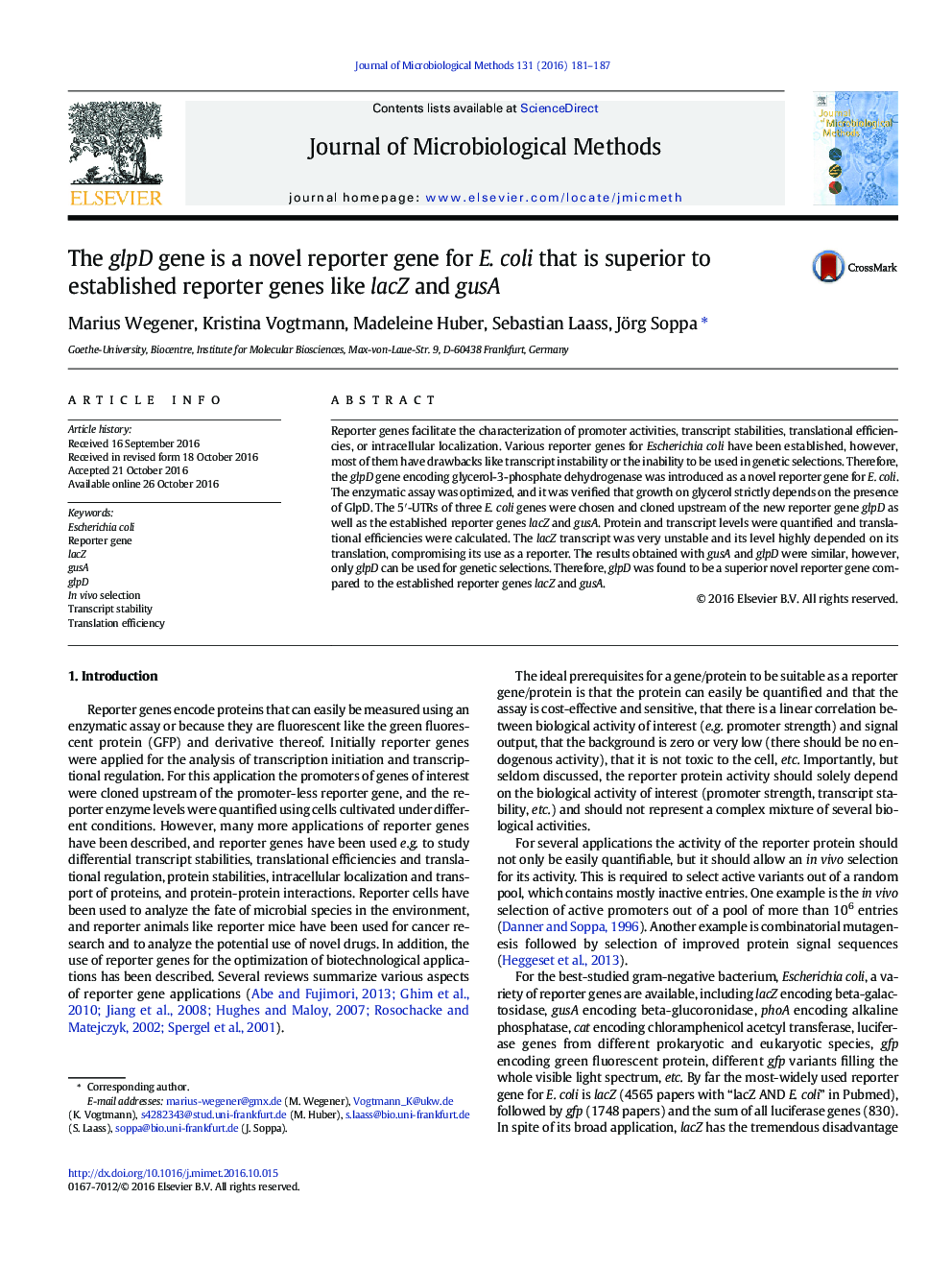| Article ID | Journal | Published Year | Pages | File Type |
|---|---|---|---|---|
| 5522380 | Journal of Microbiological Methods | 2016 | 7 Pages |
â¢Introduction of glpD as a novel reporter gene for Escherichia coliâ¢The GlpD enzymatic assay is easy, sensitive, and inexpensive.â¢glpD is superior to established reporter genes lacZ and gusA.â¢In vivo selection for the GlpD activity is possible.â¢Active genetic elements (e.g. promoters) can be selected out or random libraries.
Reporter genes facilitate the characterization of promoter activities, transcript stabilities, translational efficiencies, or intracellular localization. Various reporter genes for Escherichia coli have been established, however, most of them have drawbacks like transcript instability or the inability to be used in genetic selections. Therefore, the glpD gene encoding glycerol-3-phosphate dehydrogenase was introduced as a novel reporter gene for E. coli. The enzymatic assay was optimized, and it was verified that growth on glycerol strictly depends on the presence of GlpD. The 5â²-UTRs of three E. coli genes were chosen and cloned upstream of the new reporter gene glpD as well as the established reporter genes lacZ and gusA. Protein and transcript levels were quantified and translational efficiencies were calculated. The lacZ transcript was very unstable and its level highly depended on its translation, compromising its use as a reporter. The results obtained with gusA and glpD were similar, however, only glpD can be used for genetic selections. Therefore, glpD was found to be a superior novel reporter gene compared to the established reporter genes lacZ and gusA.
